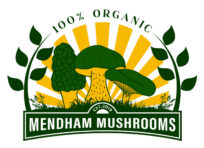Abstract
More than 2000 species of edible and/or medicinal mushrooms have been identified to date, many of which are widely consumed, stimulating much research on their health-promoting properties. These properties are associated with bioactive compounds produced by the mushrooms, including polysaccharides. Although β-glucans (homopolysaccharides) are believed to be the major bioactive polysaccharides of mushrooms, other types of mushroom polysaccharides (heteropolysaccharides) also possess biological properties. Here we survey the chemistry of such health-promoting polysaccharides and their reported antiobesity and antidiabetic properties as well as selected anticarcinogenic, antimicrobial, and antiviral effects that demonstrate their multiple health-promoting potential. The associated antioxidative, anti-inflammatory, and immunomodulating activities in fat cells, rodents, and humans are also discussed. The mechanisms of action involve the gut microbiota, meaning the polysaccharides act as prebiotics in the digestive system. Also covered here are the nutritional, functional food, clinical, and epidemiological studies designed to assess the health-promoting properties of polysaccharides, individually and as blended mixtures, against obesity, diabetes, cancer, and infectious diseases, and suggestions for further research. The collated information and suggested research needs might guide further studies needed for a better understanding of the health-promoting properties of mushroom polysaccharides and enhance their use to help prevent and treat human chronic diseases.
1. Introduction
Mushrooms are a widely consumed, low-calorie, low-cholesterol, and low-sodium health-promoting food. Some of these health-promoting properties have been attributed to the polysaccharides produced by different varieties mushrooms, as discussed in this review. Figure 1 shows that China dominates over other countries in the global production of mushrooms and Figure 2 shows that the protein, fat, ash (mineral), sugar, and fiber content varies widely among five widely consumed edible mushrooms.
Aida, et al. [1] reviewed the prospect of mushrooms as a source of prebiotics that have the potential to promote human health; prebiotics are defined as selectively fermented food ingredients that induce changes in the composition and activity of the gastrointestinal tract microbiota that confer nutritional and health benefits to the host. Such compounds include mushroom polysaccharides, most of which are β-glucan polymers, with the main chain consisting of β-(1→3) linkages with some β-(1→6) branches as well as chitin, mannans, galactans, and xylans. Digestive enzymes secreted by the pancreas cannot hydrolyze the β-glucosidic bond, which means the non-digestible mushroom carbohydrates can act as prebiotics in the digestive tract. Non-digestible oligosaccharides consist of two to three monosaccharides without nutritional value. For prebiotics from foods to have their beneficial effects they should not be structurally changed by food-processing conditions, such as heat and microwaves. Mushrooms and mushroom-derived polysaccharides, illustrated in Figure 3, Figure 4 and Figure 5, have been shown to have therapeutic properties against metabolic syndrome, which is characterized by obesity, hyperglycemia associated with diabetes, hypercholesterolemia, and hypertension [2,3,4].


